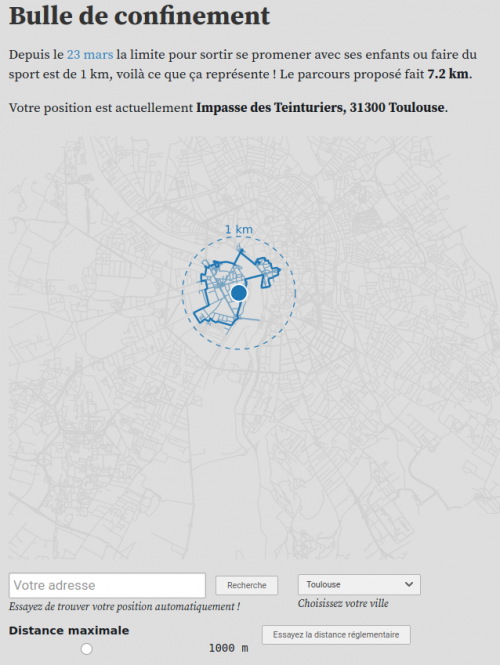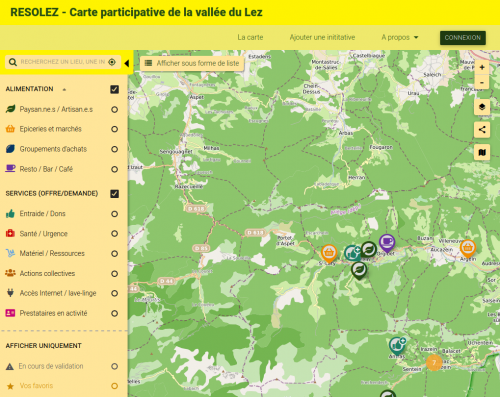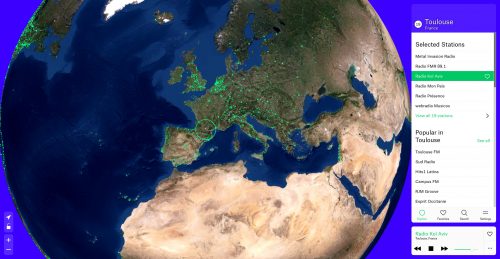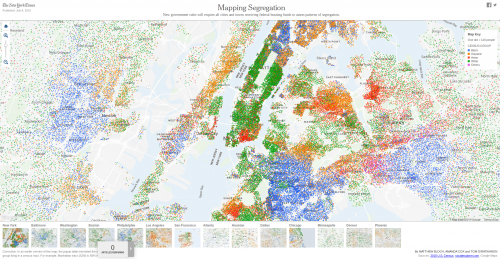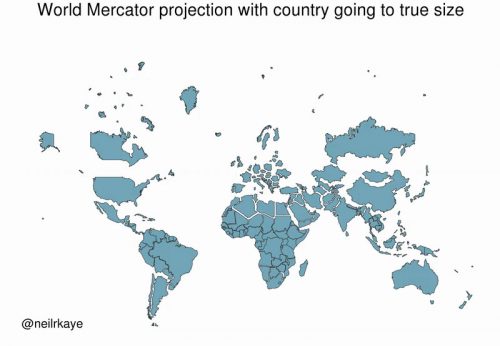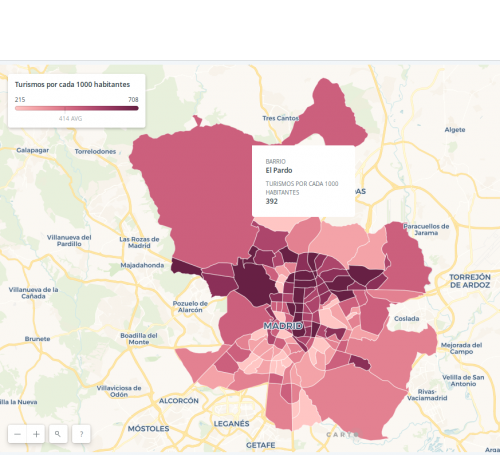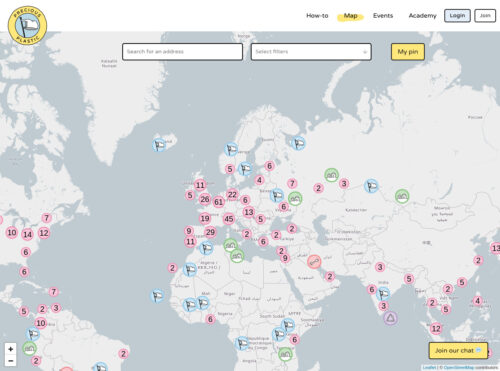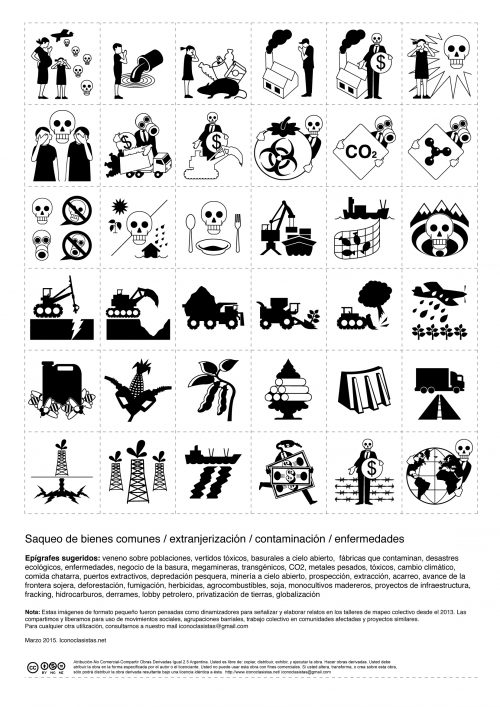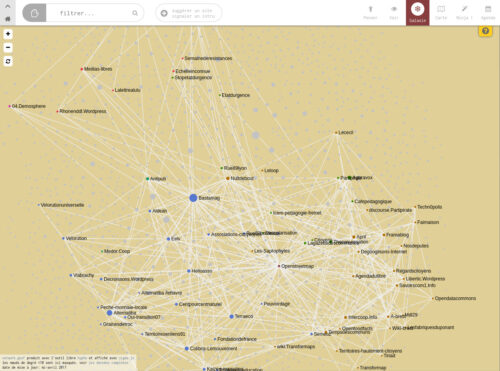Las Calles de las Mujeres
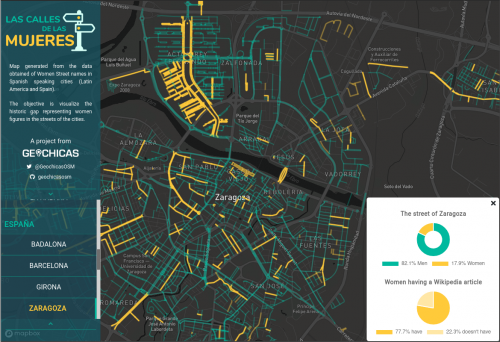
Proyecto colaborativo de Geochicas para producir un mapa a partir de las calles que cuenten con un nombre de alguna mujer en Latinoamérica y España. Esta propuesta busca enlazar y generar contenidos en OSM y Wikipedia sobre mujeres destacadas.
Historia de una mapa, por @congosto
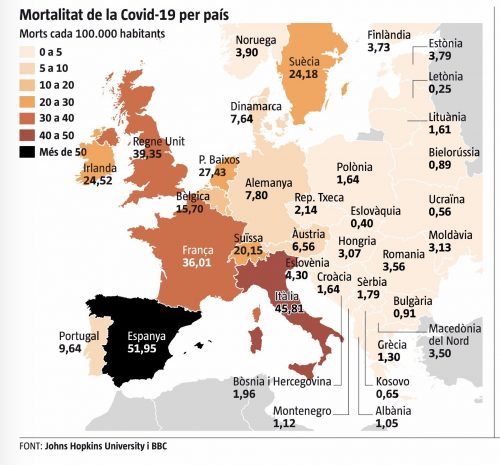
Lo primero que me chocó es la gama de colores del mapa. Lo normal es que se use un color y se aplique una tonalidad que se va oscureciendo conforme los valores son más altos. En este caso el valor más alto es de un color diferente de la gama, El negro no es marrón.
Además, la diferencia de color es muy grande respecto a Italia con una variación del 5%. No sé si esto es intencionado o tan solo un error de diseño. Este mapa va a la galería de ejemplos de malas visualizaciones para mis alumnos. Para colmo, los datos no eran correctos.
Como ya se dieron cuenta @resd9 y @A_Sorines el dato de Bélgica era erróneo en vez de 15,70% era 65,67%. El mapa lo publicó la Vanguardia y ha rectificado el dato aunque mantiene el color negro.
Garden Atlas
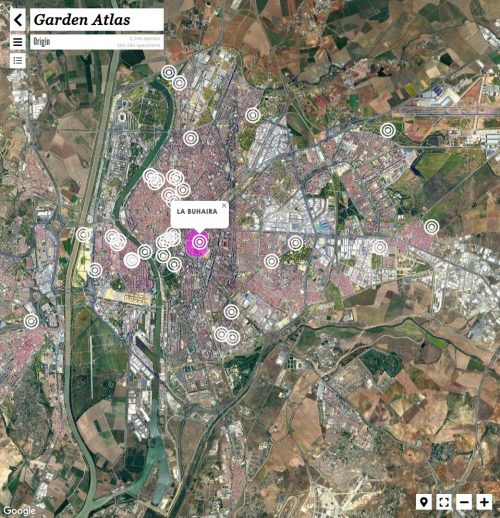
Es una plataforma digital diseñada por Nomad Garden para propiciar nuevos acercamientos a los jardines. Una herramienta que, vinculando arte, ciencia y tecnología, permite identificar las especies de un jardín sin ser un experto; medir los efectos ambientales que éstas generan sobre el entorno; crear contenidos o eventos de manera sencilla; visualizar la información de forma atractiva con textos, imágenes y delicados mapas*; difundir los contenidos a través de web y móvil, o formar parte de una comunidad en la que ya están presentes jardines como los del Real Alcázar de Sevilla, El parque de María Luisa, Arboleda Digital, El jardín de Magallanes, El jardín Cosmopolita o el Palacio de las Dueñas y entidades como el Patronato del Real Alcázar de Sevilla, el IAPH (Instituto Andaluz de Patrimonio Histórico), MECD (Ministerio de Educación, Cultura y Deporte del Gobierno de España), la Casa de Alba, el Área de Educación y el Área de Cultura del Ayuntamiento de Sevilla o asociaciones como ACPP.
Descubre, cartografía y difunde contenidos sobre los jardines y sus especies, visualizando los efectos que producen sobre el cuerpo, el ambiente y la cultura.
GoGoCartoJs
A javascript component to create terrific cartography ! GoGoCartoJs is the autonomous frontend part of the GoGoCarto Project
Mapping in the Times of COVID-19 and How You Can Help
So although many of us have to stay in, there are still ways that we can help—by simply improving the map. We’ve been talking with the mapping community to find out what the current mapping priorities are and how you can help. Here are some of the mapping attributes that are increasingly important in the current environment:
Hospitals/clinics including facilities and surrounds: This includes the opening hours, addresses, services provided, building outlines, and helipads for countries where air ambulances are commonly used.
Pharmacies: Opening hours, locations and addresses.
Supermarkets, marketplaces, and convenience stores: Opening hours, locations and addresses.
Banks, ATMs, electronic money transfers: Particularly important with global economic disruption.
We highly encourage mapping some of the above features in an area you care about. There are also some existing tasks that you can help complete.
Hospitals in the Philippines with MapRoulette
Global health sites mapping with Healthsites
Health care clinic information globally with MapContrib
Hospital outlines and surrounds in Qom, Iran with MapRoulette
Hospital outlines and surrounds in Tehran province, Iran with MapRoulette
Importing pharmacies in Catalonia, Spain with OSM Tasking Manager
Enriching hospital data in Istanbul with MapRoulette
Sick City. Maps and mortality in the time of cholera
There was to be no outbreak of cholera in New Orleans, nor among the residents who fled. Despite raw sewage and decomposing bodies floating in the toxic brew that drowned the city, cholera was never likely to happen: there was little evidence that the specific bacteria that cause cholera were present. But the point had been made: Katrina had reduced a great American city to Third World conditions. Twenty-first-century America had had a cholera scare.
For Decades, Cartographers Have Been Hiding Covert Illustrations Inside of Switzerland’s Official Maps
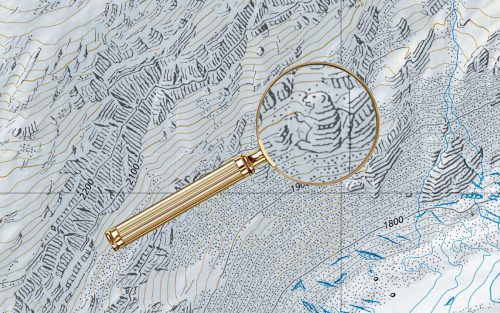
…on certain maps, in Switzerland’s more remote regions, there is also, curiously, a spider, a man’s face, a naked woman, a hiker, a fish, and a marmot. These barely-perceptible apparitions aren’t mistakes, but rather illustrations hidden by the official cartographers at Swisstopo in defiance of their mandate “to reconstitute reality.” Maps published by Swisstopo undergo a rigorous proofreading process, so to find an illicit drawing means that the cartographer has outsmarted his colleagues.
City Roads: mapas limpios de texto para usar en todo tipo de diseños
City Roads hace una sola cosa y la hace bien. A partir del nombre de una ciudad, toma los datos de OpenStreetMap y los vuelca en una espartana imagen bicolor sin texto alguno, con excepción de la ciudad en cuestión. Las únicas opciones que da son elegir esos dos colores: el de las calles y el del fondo.
¿De qué año es tu casa? El mapa que muestra cómo se ha construido España
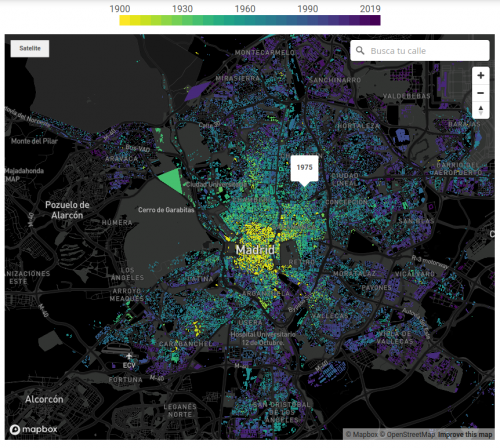
El año en el que más se construyó en España fue 1960. Por primera vez en varias décadas, el país experimentó una estabilidad económica que permitió un pequeño salto en la calidad de vida. Coincidió con el éxodo rural, para el que hicieron falta nuevas construcciones que acogiesen a los recién llegados del campo, y con el origen de un turismo que capitalizaría la economía española hasta nuestros días. La época conocida como el ‘desarrollismo’ propició dos programas de planificación económica y social en torno a zonas industrializadas y de costa que dibujaron el desarrollo urbano de los años posteriores.
Según el castastro, el 17% de construcciones de todas las capitales de provincia data de esa década. Luego llegaron los PAU, que alejaron la vida del casco histórico de las capitales, las grandes urbanizaciones, la burbuja y, también, los cadáveres inmobiliarios de la crisis.
…la fabricación en cadena del Seat 600 hizo que el automóvil pasara de ser un artículo de lujo a una utilidad de clase media, dando lugar a un nuevo enfoque urbanístico: ¿por qué vivir en el centro si ya es posible hacerlo en una casa más amplia sin tardar más de 20 minutos al trabajo?
Nació así el fenómeno del ‘urban sprawl’ o la dispersión urbana, que dio lugar a casi todos los barrios fuera de la M-30, como Aluche, Móstoles o Vallecas, donde se construyeron principalmente edificios de ladrillo; o Fuencarral y Pozuelo, lugares al norte en los que proliferaron las primeras urbanizaciones de chalés.
…este nuevo concepto de Madrid supuso la ruptura de una ciudad centrada en la proximidad, en una ciudad dispersa, basada en el coche.
Anatomy of an AI system
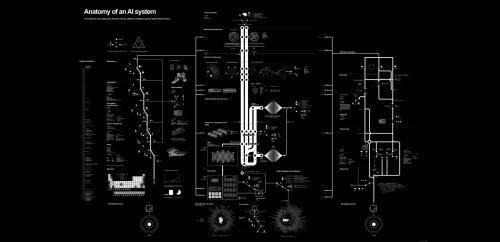
The Amazon Echo as an anatomical map of human labor, data and planetary resources
Radical maps: Cartography as a Tool of Action
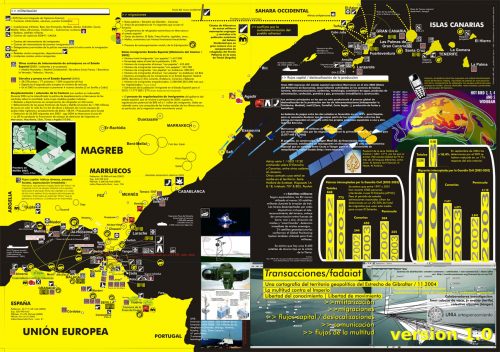
Following Deleuze and Guattari’s premise of cartography as a tool of action rather than representation, DeSoto was part of the collective that founded hackitectura.net, a platform engaged in critically visualizing geopolitical power relations.
hackitectura.net experienced a continuous interest in cartography as a tool for both the acquisition of critical knowledge but also as a form of activism.
Rather than representing a pre-existing world, cartography implies the identification of new relations, territories and machines, new ways of agencing and ‘subjectivity production.’
We need maps to keep on organizing the protection of the commons, natural and cultural ones (even though this difference doesn’t make sense anymore). Water, air, and culture are all under critical threat in our current time. We are at war, the Fourth World War as the Zapatistas coined it, against Neoliberalism and the ultra-right movements.
Gerrymandering
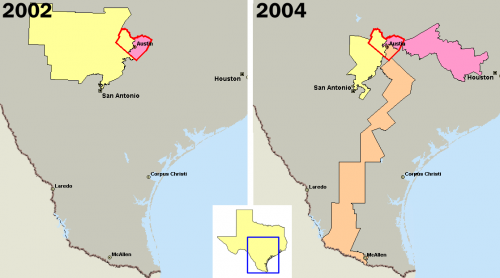
Gerrymandering is a practice intended to establish a political advantage for a particular party or group by manipulating district boundaries.
Leaflet Data Visualization Framework (DVF)
The Leaflet DVF is an extension to the Leaflet JavaScript mapping library. The primary goal of the framework is to simplify data visualization and thematic mapping using Leaflet – making it easier to turn raw data into compelling maps.
d3.geomap – Create Geographic Maps for the Web
d3.geomap is a library for creating geographic maps that are rendered in a Web browser. d3.geomap is written in JavaScript using features introduced in EcmaScript 6 and later and built on top of D3.js.
Creating a Choropleth Map of the World in Python using GeoPandas
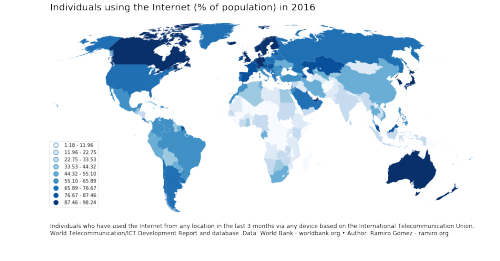
There are different ways of creating choropleth maps in Python. In a previous notebook, I showed how you can use the Basemap library to accomplish this. More than 2 years have passed since publication and the available tools have evolved a lot. In this notebook I use the GeoPandas library to create a choropleth map. As you’ll see the code is more concise and easier to follow along.
Géographie subjetive. La commune vue par ses habitants
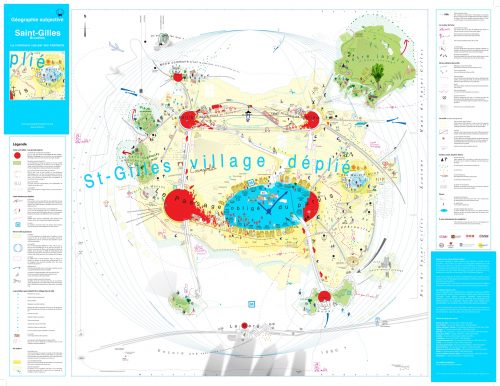
La commune de Sant Gilles, Bruxelles vue par ses habitants.
NYC Street Trees by Species
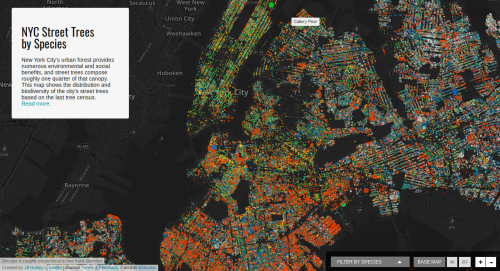
New York City’s urban forest provides numerous environmental and social benefits, and street trees compose roughly one quarter of that canopy. This map shows the distribution and biodiversity of the city’s street trees based on the last tree census.
Shock monitor. Observing Private War Impact in Human Rights
In the last two decades, states have relied on private contractors to support military operations in conflict situations. Without the necessary democratic scrutiny and public debate, Private Military and Security Companies (PMSCs) have provided services that traditionally were performed by national armies and public authorities –such as interrogation of detainees, protection of military assets, training of local armed forces, collection of intelligence and the performance of defensive and even offensive military activities-.
OpenStreetMap and Ordnance Survey Meridian 2 comparison – 2008 – 2011
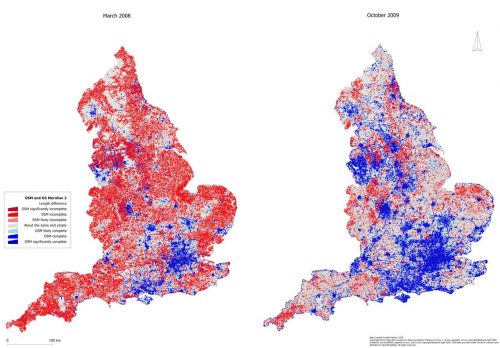
In March 2008, I started comparing OpenStreetMap in England to the Ordnance Survey Meridian 2, as a way to evaluate the completeness of OpenStreetMap coverage. The rational behind the comparison is that Meridian 2 represents a generalised geographic dataset that is widely use in national scale spatial analysis. At the time that the study started, it was not clear that OpenStreetMap volunteers can create highly detailed maps
Python script to add base maps to QGIS
This script should be run from the Python consol inside QGIS.
It adds online sources to the QGIS Browser.
Each source should contain a list with the folowing items (string type):
[sourcetype, title, authconfig, password, referer, url, username, zmax, zmin]
You can add or remove sources from the sources section of the code.
Script by Klas Karlsson
Sources from https://qms.nextgis.com/
Licence GPL-3
Learn OpenStreetMap Step by Step
Anyone can edit OpenStreetMap. Here you can learn how LearnOSM provides easy to understand, step-by-step guides for you to get started with contributing to OpenStreetMap and using OpenStreetMap and using OpenStreetMap data. If you are interested in running an OpenStreetMap workshop, check out the LearnOSM trainer resources.
Commoning in Times of Disaster: The Humanitarian OpenStreetMap Team
Just a few hours after the 7.0 magnitude earthquake hit Haiti in January 2010, a group of collaborators from the OpenStreetMap community began collecting all sorts of topographical data about the country – roads, towns, hospitals, government buildings. Within forty-eight hours high-resolution satellite imagery taken after the earthquake became available, and within a month over 600 people had added information to OpenStreetMap of Haiti.
This online map quickly became the default basemap for a wide variety of responders – search and rescue teams, the United Nations, the World Bank, and humanitarian mapping organizations such as MapAction.
Malla es una red de soporte y denuncia con la que afrontar de manera colectiva la represión durante el ejercicio de las libertades civiles y políticas
Nacida del trabajo de entidades, medios de comunicación y colectivos integrantes de la coalición Defender a quien Defiende, es también una herramienta de visibilización y análisis de las vulneraciones de los derechos humanos cometidas por cuerpos policiales y agentes de seguridad privada en el Estado español, especialmente en contextos de protesta social (derechos de reunión y manifestación prioritariamente).
Anti-eviction Mapping Project: Visualizing Bay Area Displacement and Resistance
The Anti-Eviction Mapping Project is a data-visualization, data analysis, and storytelling collective documenting the dispossession of San Francisco Bay Area residents upon gentrifying landscapes.

